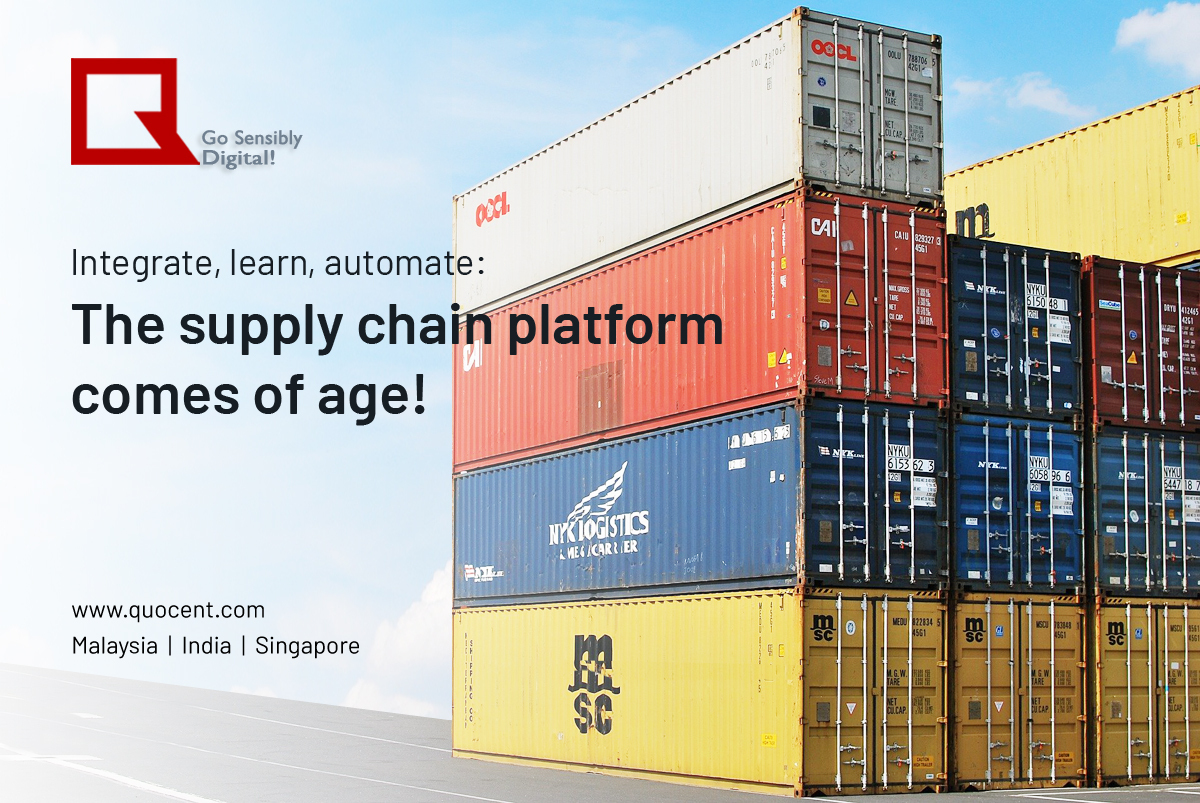When the term automation comes up, most people experience a brief change. It’s the year 2021, humanoid robots take to the streets disrupting life as we know it and clashing with their old human masters. Lucky for us, when it comes to the world of supply chain automation, robots are more about increasing efficiency and less the whole enslaving humanity angle.
It’s no secret that demand for flexible, accurate and agile supply chain logistics is on the rise. As consumer and client bases continue to grow at rapid rates, supply chains will need to adapt to larger, more complex methods of information and product transportation. However, there are many time-consuming processes that go along with managing a successful supply chain.
Here is where automation steps in. Time-wasting processes can fall into automated workflows, and human employees can spend more time forecasting, analyzing trend data and developing relationships with clients.
Manufacturing and assembly providers create products that travel down the supply chain. These products go to warehouses where they are organized and stored, and then they make their way to their final destinations where clients receive them. All the while, vital data related to the supply chain’s performance is gathered and studied by professionals in order to further optimize the chain as a whole. Supply chain automation seeks to accomplish the same thing. There are processes like picking and packing that gobble up valuable time employees could spend on higher-level tasks that require a human touch.
Problems in Supply Chain
The common issues supply chains are running into today:
Customer Expectations
If there is one universal truth about shipping, it is that customers want their products as soon as possible. Now that we live in the world of Amazon, customers expect quick and accurate delivery with stellar service should any problems arise.
Keeping Up with the Global Market
Regardless of where you stand, the global economy has been quite chaotic recently. Not only are all of the normal processes in a supply chain much more difficult on a worldwide scale, but there is a wide array of regulations an operation has to follow when working globally. A supply chain needs to be very agile and able to quickly conform to changing global requirements. When the future is as uncertain as it is in the current international market, you need to be able to change direction quickly.
Choosing the Right Channels
Right now, there is already an overwhelming number of options available when considering the order and delivery channels for your supply chain to leverage. A supply chain must have the ability to organize orders coming in from a wide array of channels without slowing down. Possessing enough data visibility is another critical part of this issue. You need to be completely in tune with how your supply chain works in order to find the best possible channel to serve your operation’s needs.
Benefits
Supply chain automation is being adopted by more and more operations as the complexity of operating in today’s market continues to rise. Supply chain managers are constantly looking for ways to improve the efficiency and accuracy of their supply chains. The key points are:
- Solving Problems with Robots
- Better Customer Service
- Protecting Your Supply Chain
- Keep Up with Shipping Demands
Trends in Automation
We’ve talked about how supply chain automation can cut costs, boost speed and increase accuracy. However, technology is always improving and innovating; so, what emerging trends should all keep an eye out for in the world of supply chain automation? Let’s take a dive into the automation market and dug up what to watch out for in the coming years:
Automation and Labor Shortages
As the world of e-commerce continues to grow exponentially, warehouses are having trouble finding enough employees to keep up with demand. As demand continues to rise, warehouses are going to continue to seek ways to stay relevant in the face of labor shortages — enter the robots. More and more warehouses are going to be turning to robotization to alleviate some of the pressure labor shortages are causing. Although, some believe that this is only a short-term solution and that companies need to change their recruiting and retainment methods to survive.
Automated Trucking
It is also no secret that the trucking world is facing its own labor shortages, so how do supply chains contend with this in a world where consumer demand is constantly rising? The answer is driverless trucks. Multiple companies are trying to break into this market, but we are still a way out from convoys of driverless trucks being spotted on the highways. Right now, this technology is still being tested in combination with a human riding along to mitigate any unforeseen issues. While this tech is still going through development, onboard truck automation can be expected to work in tandem with drivers to boost vehicle control and safety for drivers and other vehicles on the road. These automated inclusions will be able to pass significant amounts of trucking and driver data back to managers, who can then forecast and plan out even more efficient trucking practices.
Improved Machine Learning
Supply chains inherently come with massive amounts of important data that travels alongside products. In order to make the most out of this information, and to keep up with demand, automation that are already in place will need to be able to quickly scale as time goes on. Whether this is adapting to a constantly changing warehouse or giving users more visibility into their supply chain, machines are going to need to be able to adapt. As supply chain automation improves, more responsibilities will be passed on to autonomous processes. In the near future, supply chains will be closer to living breathing organisms as automated functions will be able to quickly ramp up or scale down a product cycle as demand waxes and wanes.
Trends in Supply Chain Management
Outside of automation, there are other trends to look for that could make a splash in the world of supply chain management in the coming years:
Rise of Virtual and Increase Reality
When the word virtual, or augmented, reality comes into play, most people think of the booming VR gaming industry. This tech has uses outside of letting you pilot giant robots through space, however. Picking accuracy in the warehouse is one of them.
Impact of Global Trade
Things are a bit of a mess in the political realm right now, and these issues affect global supply chains around the world. As more tariffs are passed and varying trade wars continue, supply chains need to be ready to react. As things go back and forth, regulations could change at any moment. Disruption of supply chains is almost a given in this type of climate, as things keep moving supply chain managers should be on the lookout for sudden changes in the global environment.
Widespread Digitalization of Supply Chains
As consumer bases continue to grow, supply chains can be expected to continue moving toward digital environments to remain competitive. Obtaining visibility into your supply chains is quickly becoming a necessary criterion when considering how to run a successful chain. Older analog methods of data storage have been left in the dust along with the human errors that go along with them. This valuable gold-mine of data is vital when looking for ways to improve the efficiency and accuracy of a supply chain, and those that do not jump onto this bandwagon are going to be left behind.



